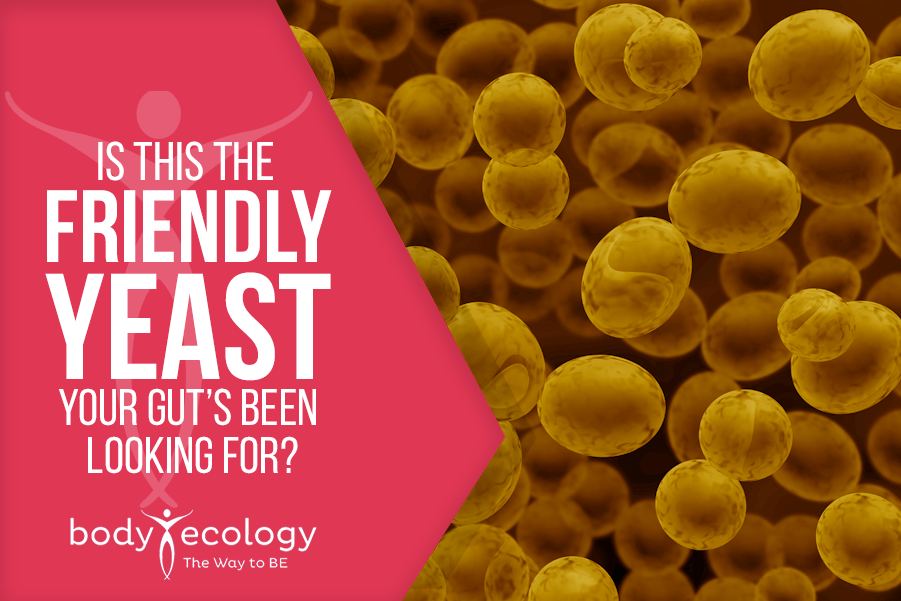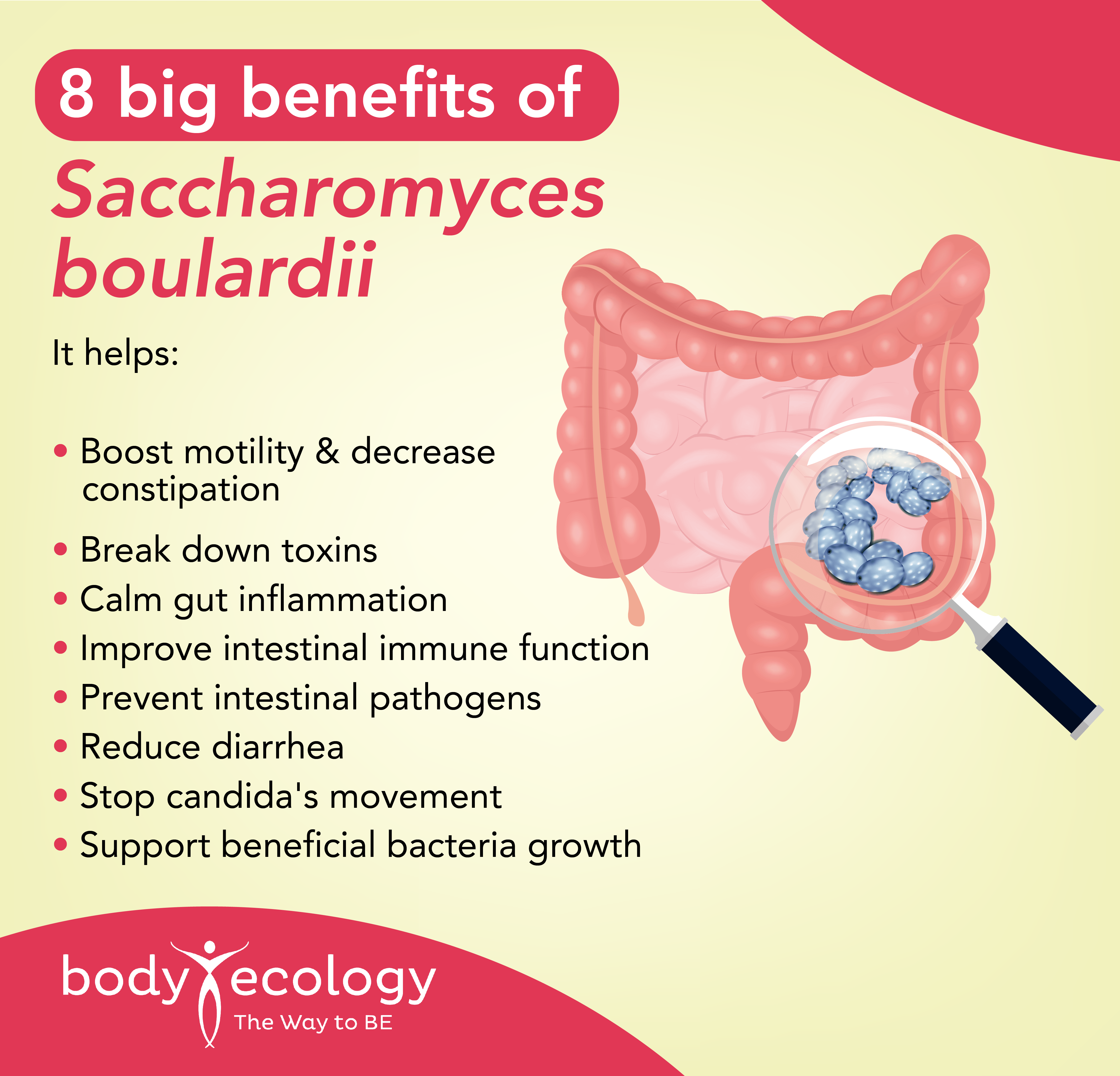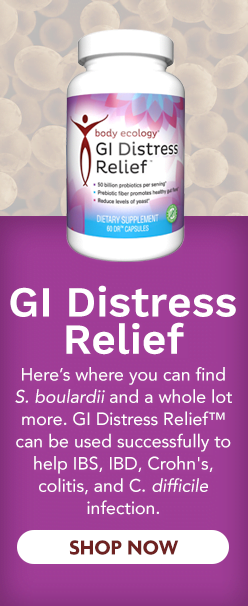
Saccharomyces boulardii: The friendly yeast your body loves
Most people know about friendly bacteria, but what about the friendly yeast Saccharomyces boulardii? This non-pathogenic yeast has a host of documented benefits, including helping to support the gastrointestinal and immune systems and inhibiting the formation of troublesome Candida albicans biofilms.
So, what is S. boulardii, and how does it work its magic?
S. boulardii is well-regarded as a beneficial microorganism effective against a number of bacteria-induced gastrointestinal diseases, including cholera.1,2
This friendly yeast has been found to:
- Break down toxins produced by pathogens and bind to toxins to remove them from the body — including helping to remove cholera toxin.3
- Support other beneficial microorganisms, such as probiotic bacteria in the gut to help reestablish a healthy microbiome.1
- Protect the epithelial cells that line the gut, helping to prevent pathogenic bacteria and yeasts from sticking around in the body.4

S. boulardii also helps to restore a normal balance of short-chain fatty acids (SCFAs), which help to keep gut inflammation in check in addition to supporting normal digestive enzyme production.1
There are other ways in which S. boulardii sustains gut health, like enhancing intestinal immune function. This beneficial yeast does this by modulating levels of secretory IgA and cytokines — and the overall inflammatory immune response.5,7 It also helps to reinforce the intestinal barrier, thereby reducing the chances that pathogens get into the bloodstream through a leaky gut.1,6,7
Hey! Click here if your gut needs some TLC.
How does S. boulardii soothe diarrhea and fight candida?

S. boulardii can promote good health by protecting against potential causes of diarrhea. This yeast acts against both Clostridium difficile and Escherichia coli, two key pathogens responsible for almost all cases of acute diarrhea.8
What’s more, S. boulardii can produce a protease enzyme that digests toxin A and B molecules produced by C. difficile, helping to prevent C. difficile-induced inflammatory diarrhea.9 Studies have found that S. boulardii helps to reduce overgrowth of E. coli and decreases diarrhea associated with antibiotic use.10
Where S. boulardii really shines is in helping to prevent Candida albicans from sticking around and creating biofilms in the body:
- Researchers have found that S. boulardii inhibits the ability of C. albicans to move from the gastrointestinal tract to become a systemic infection involving the lymph nodes, blood, liver, kidneys, spleen, and other organs and tissues.11
- S. boulardii also reduces inflammation and intestinal colonization by C. albicans.12
- A daily dose of S. boulardii could be helpful, then, in preventing and treating C. albicans infections and biofilm formation.
In one study, live S. boulardii cells had a very strong effect on the filamentation (hyphae and pseudohyphae formation) of C. albicans, meaning that the pathogenic yeast was much less able to form filaments and stick to surfaces to build biofilms.13
You can find this friendly yeast in Body Ecology’s new GI Distress Relief™ — a combination of strain-specific, clinically-proven microbes shown to help improve gut health.
Alongside two hardy, resilient strains of Bifidus lactis (HN019™ and B1-04®), this formula features 10 billion CFUs of S. boulardii per serving in a delayed-release capsule. GI Distress Relief™ also includes Sunfiber, a prebiotic fiber that promotes healthy gut flora.
REFERENCES:
- 1. McFarland LV, Surawicz CM, Greenberg RN, et al. (1994). A randomized placebo-controlled trial of Saccharomyces boulardii in combination with standard antibiotic for Clostridium difficile disease. J Am Med Assoc 271: 1913–1918.
- 2. Czerucka D, Rampal P. (2002). Experimental effects of Saccharomyces boulardii on diarrheal pathogens. Microbes Infect 4:733–739.
- 3. Moré MI, & Swidsinski A. (2015). Saccharomyces boulardii CNCM I-745 supports regeneration of the intestinal microbiota after diarrheic dysbiosis – a review. Clin Exp Gastroenterol, Aug 14;8:237-55.
- 4. Terciolo C, Dobric A, Ouaissi M, et al. (2017). Saccharomyces boulardii CNCM I-745 Restores intestinal Barrier Integrity by Regulation of E-cadherin Recycling. J Crohns Colitis, 11(8):999-1010.
- 5. Rajput IR, Ying H, Yajing S, et al. (2017). Saccharomyces boulardii and Bacillus subtilis B10 modulate TLRs and cytokines expression patterns in jejunum and ileum of broilers. PLoS One, Mar 20;12(3):e0173917.
- 6. Jandu N, Zeng ZJ, Johnson-Henry KC, & Sherman PM. (2009). Probiotics prevent enterohaemorrhagic Escherichia coli O157:H7-mediated inhibition of interferon-gamma-induced tyrosine phosphorylation of STAT-1. Microbiology, Feb;155(Pt 2):531-40.
- 7. Wine E, Gareau MG, Johnson-Henry K, & Sherman PM. (2009). Strain-specific probiotic (Lactobacillus helveticus) inhibition of Campylobacter jejuni invasion of human intestinal epithelial cells. FEMS Microbiol Lett, Nov;300(1):146-52.
- 8. Stier H, & Bischoff SC. (2016). Influence of Saccharomyces boulardii CNCM I-745on the gut-associated immune system. Clin Exp Gastroenterol, Sep 13;9:269-279.
- 9. Castagliuolo I, Riegler MF, Valenick L, et al. (1999). Saccharomyces boulardii protease inhibits the effects of Clostridium difficile toxins A and B in human colonic mucosa. Infect Immun, Jan;67(1):302-7.
- 10. Kabbani TA, Pallav K, Dowd SE, et al. (2017). Prospective randomized controlled study on the effects of Saccharomyces boulardii CNCM I-745 and amoxicillin-clavulanate or the combination on the gut microbiota of healthy volunteers. Gut Microbes, Jan 2;8(1):17-32.
- 11. Berg R, Bernasconi P, Fowler D, Gautreaux M. (1993) Inhibition of Candida albicans translocation from the gastrointestinal tract of mice by oral administration of Saccharomyces boulardii. J Infect Dis 168: 1314–1318.
- 12. Jawhara S, Poulain D. (2007). Saccharomyces boulardii decreases inflammation and intestinal colonization by Candida albicans in a mouse model of chemically-induced colitis. Med Mycol 45: 691–700.
- 13. Krasowska A, Murzyn A, Dyjankiewicz A, et al. (2009). The antagonistic effect of Saccharomyces boulardii on Candida albicans filamentation, adhesion and biofilm formation, FEMS Yeast Research, 9(8), pp 1312–1321, https://doi.org/10.1111/j.1567-1364.2009.00559.x.









